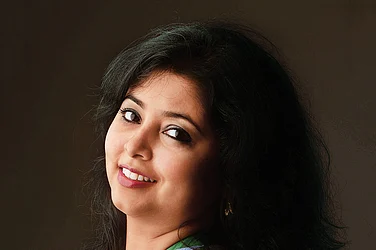Seventy years back, she was crowned in a now-vanished era where her coronation was the first to be telecast live from Westminster Abbey. The queen had many epithets attributed to her, including being the "most recognisable woman on earth" till perhaps Princess Diana beat her to it. As we bring out our annual influencer issue, we must begin by discussing the queen.
In her long reign of 70 years, Queen Elizabeth was perhaps one of the biggest influencers. She fits the bill even by the narrow definition of the term created as part of the marketing lexicon. She is the face that sold British tourism beyond the Commonwealth. Research shows that monarchy and football are top of mind when the world thinks of Great Britain. For a monarchy stripped of almost all its powers, to hold such sway is definitely some influence.
Let us not forget the queen’s penchant for digital innovation. She launched her YouTube channel way back in 2007. She personally tweeted for the first time in 2014 (quite aptly about the Information Age exhibition at the Science Museum in London). In fact, she started using email in 1976. Not to forget, she dropped the royal stiff upper lip and the "mic" to join Prince Harry in a video with the Obamas that, no points for guessing, went viral in 2016. She was ostensibly promoting the Invictus Games then. She also sportingly allowed the secret filming of a video with James Bond, aka Daniel Craig, for promoting the Olympic Games in 2012.
Social media is breaking new ground every day in pushing the boundaries of innovation in content creation and creativity. In this, the prize is your attention, and a thousand brands are vying for it. In his book The Chaos Machine, journalist Max Fisher explains how social media algorithms and design “deliberately shape our experiences”, exerting “such a powerful pull on our psychology and our identity that it changes how we think, behave and relate to one another”. But beyond the naivete that technology is the magic carpet that is breaking political and geographical boundaries to carry your message to the world within nanoseconds, there lies an ugly truth. The book details how researchers at social media behemoths use algorithms to extend our time spend on their platforms by exploiting the human attraction to "divisiveness". This is the cost that we are all paying for using social media.
But, at times, outweighing this "cost" is the capability of social media to give voice to the voiceless and the disenfranchised. Peanut seller Bhuban Badyakar and his viral song Kacha Badam might cross your mind. Many such Bhubans have discovered the power of social media. Read about the rise of influencers from India’s hinterland in this issue. Read the inspiring story of Virali Modi. For her, social media was the only way to evade the harshness and hopelessness of her life. We also have our annual influencer ranking of the Top 20 in the country. The ranking done by Grapes is based on the influencers’ following and the power of their brand engagement.
As we wade through our social media feed every day, we mostly criticise it for becoming a tool in the hands of the powerful to "control" us. During such moments, we can also look to the queen to understand how it can be effectively used to evoke patriotism without politics corrupting it.
Influence
Social media is breaking new ground every day in pushing the boundaries of innovation in content creation and creativity

Outlook Image Photo: Outlook Description
Outlook Image Photo: Outlook Description
Published At:
WATCH
MORE FROM THE AUTHOR
×





















